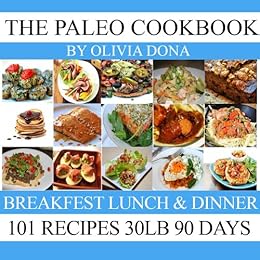WHAT YOU CAN AND CAN'T EAT AROUND THE PALEO DIET
I'm sensing bad about the Neanderthals. Most nutritionists consent that the Paleo diet gets at least a very important factor right-cutting down on processed foods that have been highly revised off their raw express through various methods of preservation. For example white breads and other sophisticated flour products, manufactured cheese, certain chilly cuts and packaged meats, poker chips, and sugary cereals. Such processed food items often offer less protein, fiber and flat iron than their unprocessed equivalents, and some are filled with sodium and preservatives that may increase the risk of cardiovascular disease and certain cancers.
Be extra careful not to eat potatoes that seem to be turning renewable because it's a sign of an increased degree of solanine and chaconine. These substances occur in mother nature to defend against insects, disease, and predators by making the meals bitter, which also makes them poisonous for you. So if your potatoes flavour bitter or are needs to turn green, definitely take them off the menu!Eating beef is thought by some scientists to have been essential to the evolution in our ancestors' much larger brains about two million years ago. By needs to eat calorie-dense beef and marrow instead of the low-quality plant diet of apes, our direct ancestor, Homo erectus, had taken in enough extra energy at each meal to help fuel a bigger brain. Digesting an increased quality diet and less cumbersome plant fiber could have allowed these humans to obtain much smaller guts. The power freed up therefore of smaller guts could be employed by the greedy brain, according to Leslie Aiello, who first suggested the theory with paleoanthropologist Peter Wheeler. The mind requires 20 percent of a human's energy when resting; by comparison, an ape's brain requires only 8 percent. Which means that from enough time of H. erectus, the human body has depended on a diet of energy-dense food-especially beef. So glad I came across this august to Oct I followed the paleo diet. I wish I never ended it following it. It had been easy to check out. I lost nearly forty pounds. MY bloodstream sugars were perfect ( no meds needed). Since I halted carrying it out the bloating returned. Gained some of the weight again. Headaches came back. I am sticking with it this time around and the rest of my entire life. Anyone attempting to lose weight and feel better I would recommend this for you.Also, studies have projected that the common lifespan was only 30 years, due to accidents, infections and lack of antibiotics. The assumption is that excess weight was unusual, as were degenerative diseases. Research implies that they generally had plenty to consume, were comparatively better and had less difficult lives than we do in the 21st century. Information on their diet is varied, inconsistent and contentious. What we realize for several and furthermore important is not what our Paleolithic ancestors ate but what they didn't eat. They didn't take in refined flour, sweets, sodium or hydrogenated oils.
So glad I came across this august to Oct I followed the paleo diet. I wish I never ended it following it. It had been easy to check out. I lost nearly forty pounds. MY bloodstream sugars were perfect ( no meds needed). Since I halted carrying it out the bloating returned. Gained some of the weight again. Headaches came back. I am sticking with it this time around and the rest of my entire life. Anyone attempting to lose weight and feel better I would recommend this for you.Also, studies have projected that the common lifespan was only 30 years, due to accidents, infections and lack of antibiotics. The assumption is that excess weight was unusual, as were degenerative diseases. Research implies that they generally had plenty to consume, were comparatively better and had less difficult lives than we do in the 21st century. Information on their diet is varied, inconsistent and contentious. What we realize for several and furthermore important is not what our Paleolithic ancestors ate but what they didn't eat. They didn't take in refined flour, sweets, sodium or hydrogenated oils.